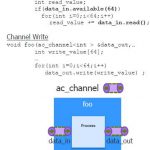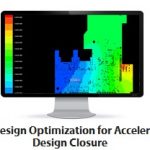The EDA tools industry relies upon ongoing productivity enhancements to existing products, to manage increasing SoC complexity and to address shrinking design schedules. The source of ideas for enhancements can come from a variety of sources – e.g., customer feedback, collaboration with the foundries, and features found … Read More
Author: Tom Dillinger
Foundry Technology Packaging Solutions
A significant shift is underway in the fabless semiconductor business model. As the application markets have become more diverse (and more cost-sensitive), product requirements have necessitated a new focus on multi-die packaging technology. … Read More
Mainstream PCB Design Requires a Complete Tool Platform, Too
The EDA tool offerings for printed circuit board design commonly address one of three customer markets: (1) the enterprise design team, (2) the product development engineer, and (3) the “maker”. … Read More
STT-MRAM – Coming soon to an SoC near you
An increasing percentage of SoC die area is being allocated to memory arrays, as applications require more data/instruction storage and boot firmware. Indeed, foundries invest considerable R&D resources into optimizing their array technology IP offerings, often with more aggressive device features than used for other… Read More
High Level Synthesis Update
High-level synthesis (HLS) involves the generation of an RTL hardware model from a C/C++/SystemC description. The C code is typically referred to as abehavioraloralgorithmicmodel. The C language constructs and semantics available to architects enable efficient and concise coding – the code itself is smaller, easier to write/read,… Read More
Is the U.S. ready to adopt a new financial model to support microelectronics?
Amidst all the active news about new process introductions at 16/14/10/7nm and the status of next-generation lithography development, there was a recent press release that could have as large an impact upon the microelectronics industry in the United States. A groundbreaking ceremony was recently held in Marcy, New York for… Read More
Top Ten #53DAC Highlights
Here is a very subjective list of the Top 10 logistical and technical highlights from DAC’53.
(10) With DAC attendance down from its peak days, the Austin Convention Center served as an excellent venue. There was good participation from companies with design centers in the “Silicon Hills”. And, I saw colleagues from Silicon Valley,… Read More
Layout Pattern Matching for DRC, DFM, and Yield Improvement
It is truly amazing to consider the advances in microelectronic process development, using 193i photolithography. The figure below is a stark reminder of the difference between the illuminating wavelength and the final imaged geometries. This technology evolution has been enabled by continued investment in mask data generation… Read More
"Re-Inventing" Tapeout Sign-off — Applying Big Data Techniques to Electrical Analysis
A common SoC design methodology in current use starts with preparation of the physical floorplan — e.g., block/pin placement, global clock domain and bus signal planning, developing the global/local power distribution (and dynamic power domain management techniques). Decoupling capacitor estimated densities and… Read More
The Emerging Importance of Parallel SPICE
SPICE simulation is the workhorse tool for custom circuit timing validation and electrical analysis. As the complexity of blocks and macros has increased in advanced process nodes — especially with post-layout extraction parasitic elements annotated to the circuit netlist — the model size and simulation throughput… Read More















Jensen Huang Drops Donald Trump Truth Bomb on Joe Rogan Podcast